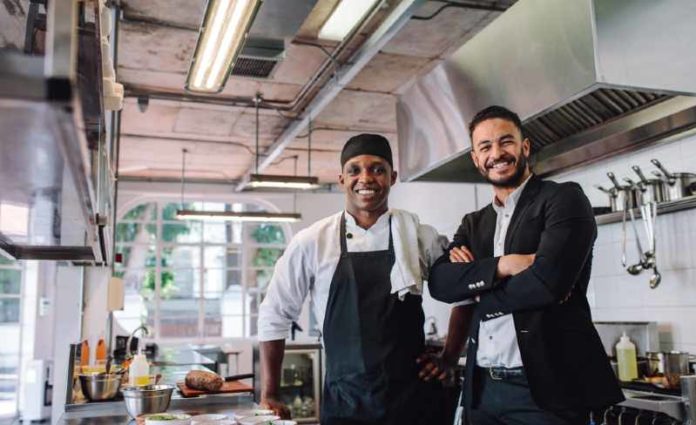Opening and managing a restaurant is not for the faint of heart. Thin margins and evolving food trends make it difficult, but competition is often cited as the biggest challenge of managing a successful restaurant.
It may be even more difficult for SMB restaurants to compete with the enterprise giants. However, there is always room for opportunity, no matter how small your establishment is. In fact, 85 percent of consumers don’t know what they are going to eat for dinner just hours beforehand, so restaurants that position themselves wisely can win guests over the larger competitors.
The holidays are the perfect time to ramp up your brand, so here are three ways you can make your restaurant stand out and compete against enterprise restaurants.
Know Your Audience & Define Your Customer Persona
A customer persona is the demographic and behavioral profile of your guests. For example, in a college town, your customer persona is probably an early 20-something looking for an affordable meal.
For most restaurants, you will have multiple personas, but your top three should tie back to your most frequent customers.
After you have a list of potential customers, go back to your sales data and correlate the customer type with what they are ordering. You can pay attention to other things too, such as each persona’s frequency of gift card purchases or if they typically order to-go or dine in. This can give you an idea of what to expect. For example, if you see your customers order carry out more frequently than they dine in, schedule your more advanced servers that can handle takeout orders while maintaining their section.
There are a lot of easy ways to optimize a customer persona experience. Larger restaurants don’t necessarily have the ability to be attentive to every customer, so SMBs have the advantage when it comes to personalizing the guest experience. If one of your personas is a family with young kids, then you should have high-chairs and changing tables, family-sized meals, and/or multi-diner specials available. If you operate in a college town, having a student discount speaks to your understanding of the needs of your guests.
Map Your Restaurant’s Competitive Footprint
Google Maps has a wealth of information on your competitive landscape, and you can filter based on how your top customers access your restaurant.
Think about the ways your customers would search for your restaurant, whether by your food concept (Italian food), by popular dishes (spaghetti and meatballs), or by your dining style (family friendly). Once you have your keywords identified, you’re ready to search for and identify your competition.
If you primarily cater to foot-traffic, search within one square mile of your restaurant. Is your restaurant accessible by public transportation? Look at the nearby bus or train stops to see which other restaurants are on the same route. For restaurants that have guests coming by car, you’ll want to search a broader area, looking at a 10-mile radius.
While this data shows your local competition, it also gives you an idea of where best to market. Post signs at the local bus stop advertising your happy hour, or mail holiday menus to all houses within a local zip code.
And don’t forget the importance of third-party delivery services: 44 percent of millennials will order from a third-party delivery service every few months. If your restaurant is not positioned effectively on providers like GrubHub or UberEats, you may be overlooked by diners who are solely evaluating delivery options.
Make sure your brand is standing out from the other options — especially the bigger players. Whether it’s catchy titles for your entrees, holiday promotion deals, or seasonal items, give your diners a reason to choose your burger over the neighboring McDonald’s.
What Makes Your Restaurant Worth the Trip?
The key to differentiating your restaurant is to create a unique experience that appeals to your target personas. Is the experience at your restaurant unique enough in comparison to your enterprise competitors? If you can’t come up with a few differentiating factors, it’s likely that your guests won’t be able to justify a regular visit. Think about aspects like food and drink, ambiance, price, and even holiday spirit. All of these can give you a leg-up on the competition.
Once you identify your key differentiators, don’t keep it a secret. Make sure your menu reflects these differentiators – as this is your best marketing tool – and use social media to promote all the “secret ingredients” that make your restaurant a fun, unique place.
Creating a Winning Formula for Restaurant Success
You can set yourself and your restaurant up for success by understanding your customer and your competition, especially enterprise restaurants, and capitalizing on what makes you stand out.
A winning formula is one where you can clearly demonstrate customer value, and where your competitors are unable to replicate the experience that you provide. Add some seasonal items to your menu, stock up on gift cards, deck your halls, and get ready to have your best holiday season yet.
Chelsea Verstegen is a Chicago-based writer who works for Toast. She enjoys sampling local cuisine, with a particularly strong affinity for tacos and natural wine.
Restaurant stock photo by Jacob Lund/Shutterstock







